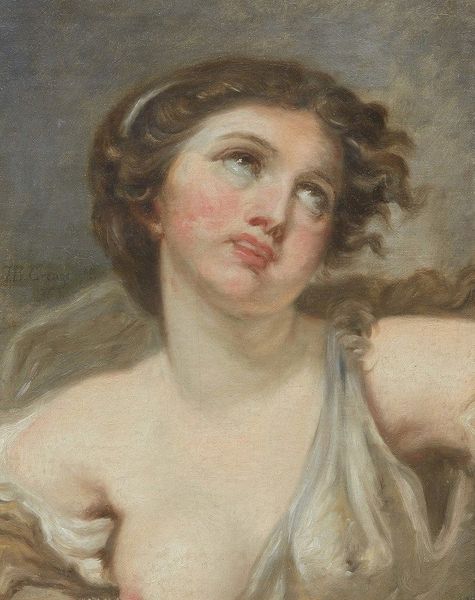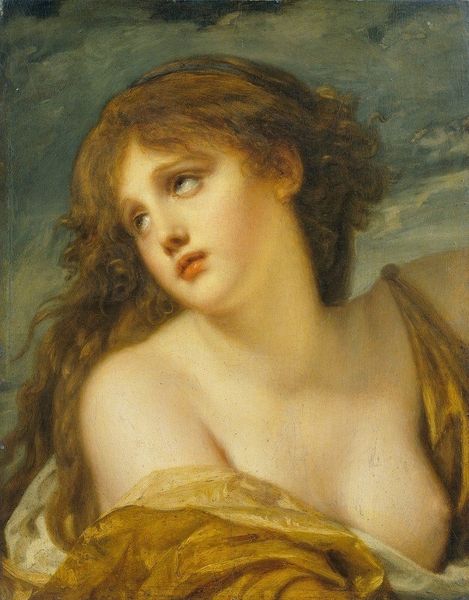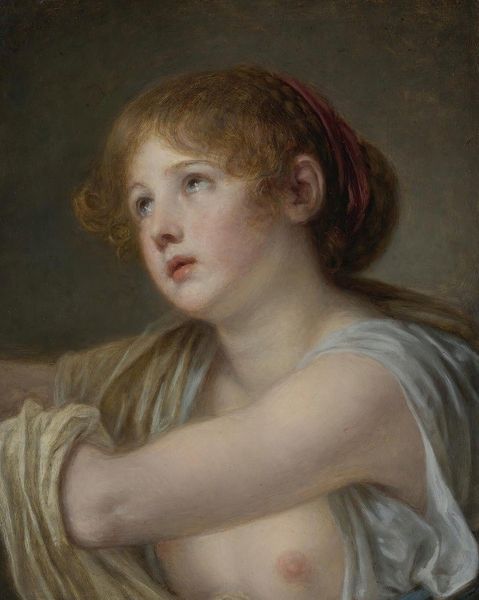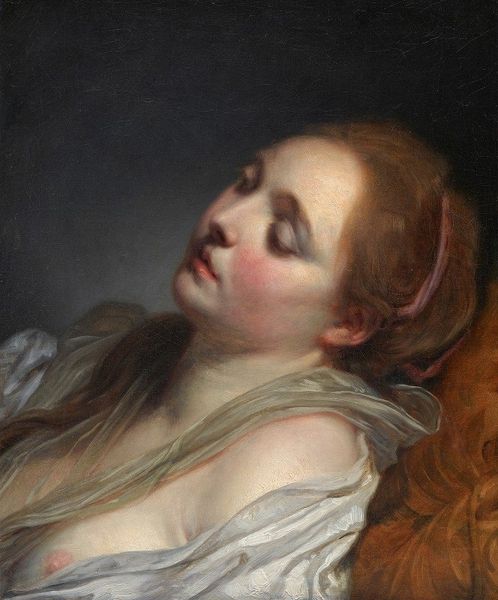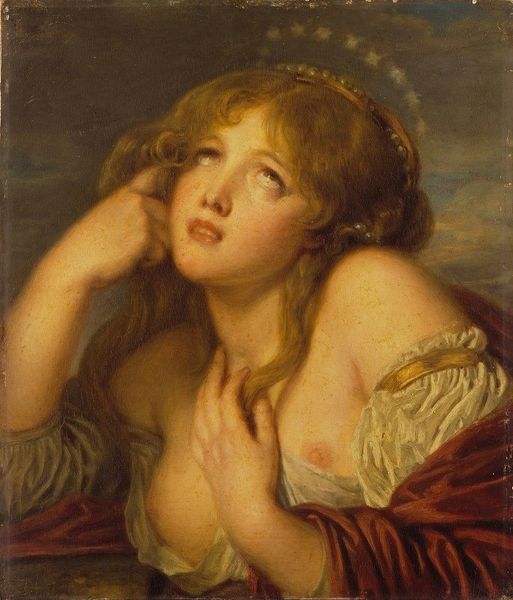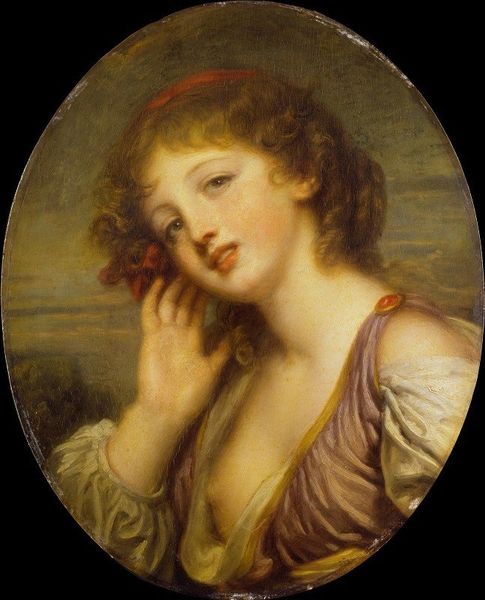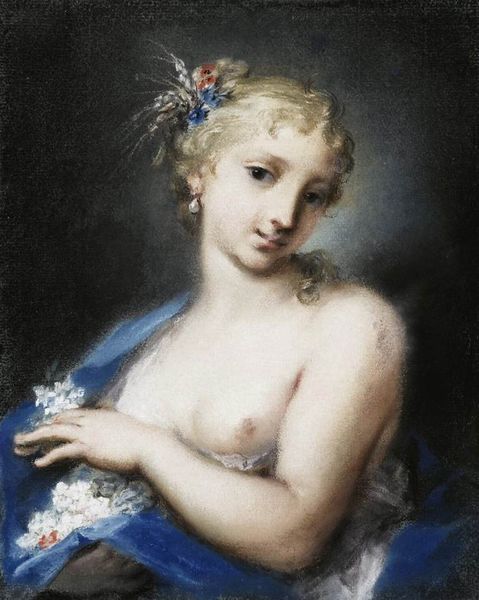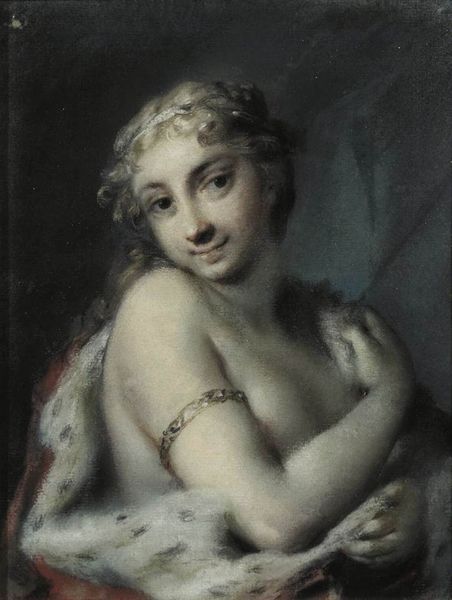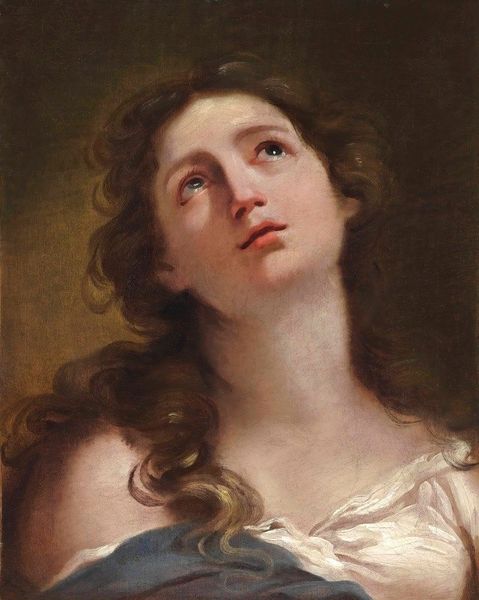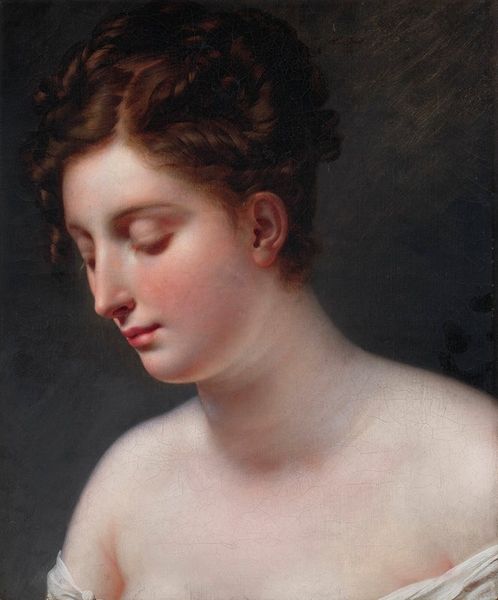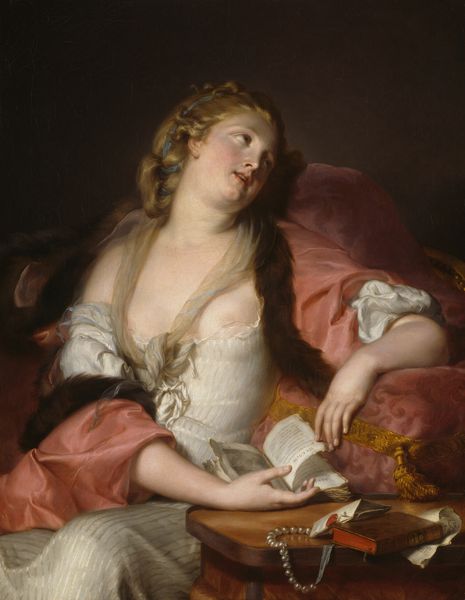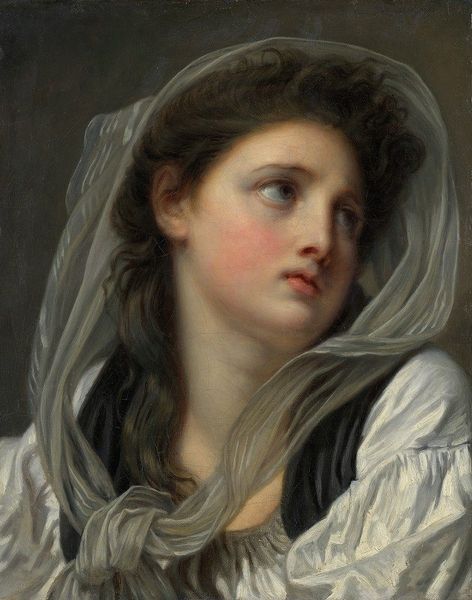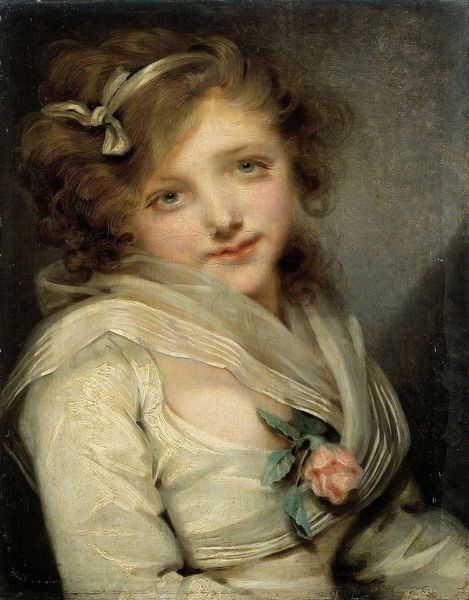
painting, oil-paint
#
portrait
#
figurative
#
character portrait
#
painting
#
oil-paint
#
figuration
#
romanticism
#
genre-painting
#
nude
#
portrait art
#
realism
Copyright: Public Domain: Artvee
Curator: Take a moment with this painting—"The Bust of a Young Girl, Called Virginie"—attributed to Jean-Baptiste Greuze. It’s a lovely example of oil paint handling. What strikes you first? Editor: That upward gaze, definitely. There’s something deeply romantic, even spiritual, in the composition that’s almost theatrically enhanced by the lighting. It reminds me of operatic melodrama. Curator: Yes, the raised eyes are so interesting. It's a common trope—often meant to signify innocence, piety, or perhaps, resignation to fate. Considering the era and genre painting styles of the time, what do you see at play? Editor: The soft impasto and sfumato create this hazy, dreamlike quality, which, combined with the upward gaze, builds to the character's mood. The loose hair furthers a slightly melancholic sensuality that isn’t entirely innocent. Curator: Good point. Greuze often played with this ambiguity of virtue. He was highly skilled at embedding morality and desire in the same portrait. In that way, this "Virginie" is quite complex. Editor: Absolutely. And the arrangement of light and shadow isn't arbitrary. It creates visual weights that give substance to those very abstract ideas, creating this intimate yet restrained study in human psychology. It’s a powerful articulation of longing or perhaps existential questioning. Curator: Indeed. Consider that visual code—Greuze prompts us to reflect not only on the girl, but on how our own values and feelings change our perception. Is this what we think youth should look like, even if it’s burdened by expectation? Editor: Precisely! It seems timeless, in that it asks a question that resonates through the ages: “How do we define ourselves?” It leaves me both moved and subtly disturbed. Curator: And for me, it speaks volumes about art’s capacity to hold memory and provoke endless reinterpretations across generations. Editor: It's the subtle formal qualities that sustain that dialogue across time.
Comments
No comments
Be the first to comment and join the conversation on the ultimate creative platform.
